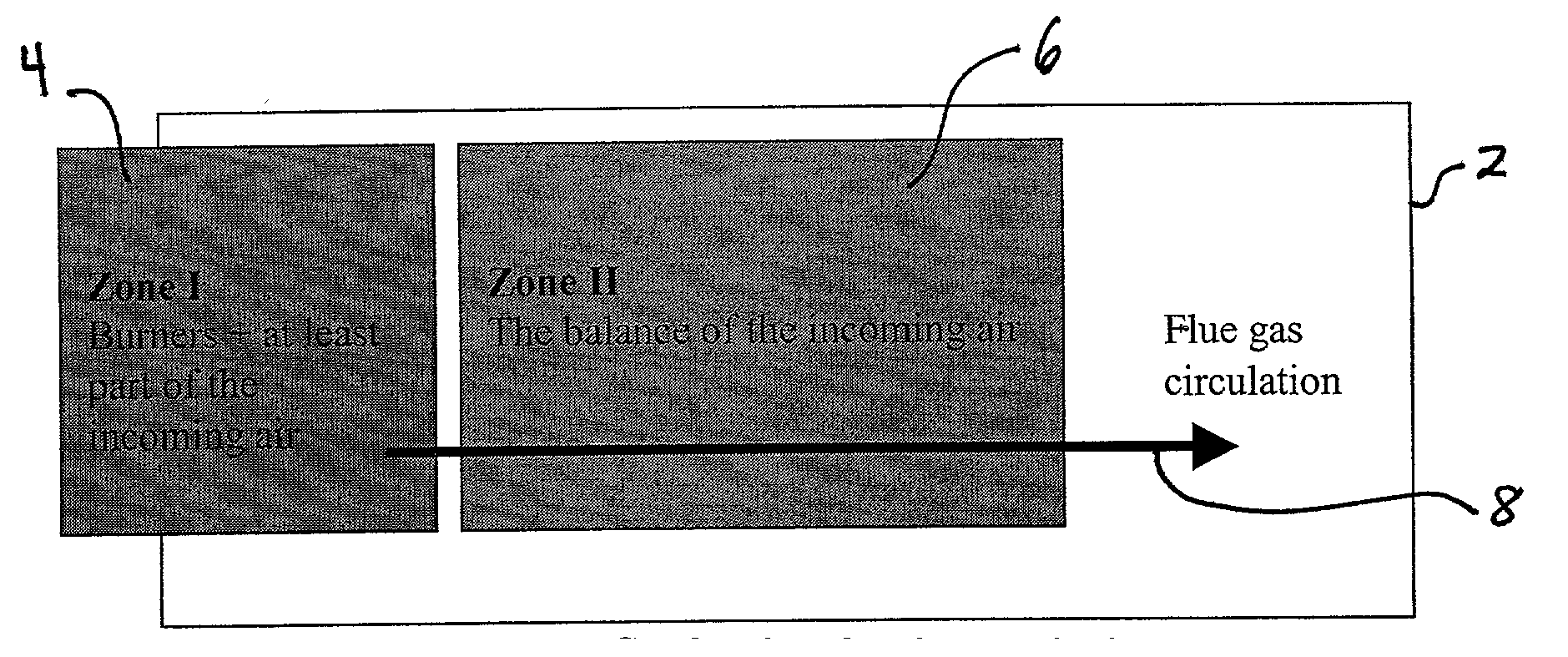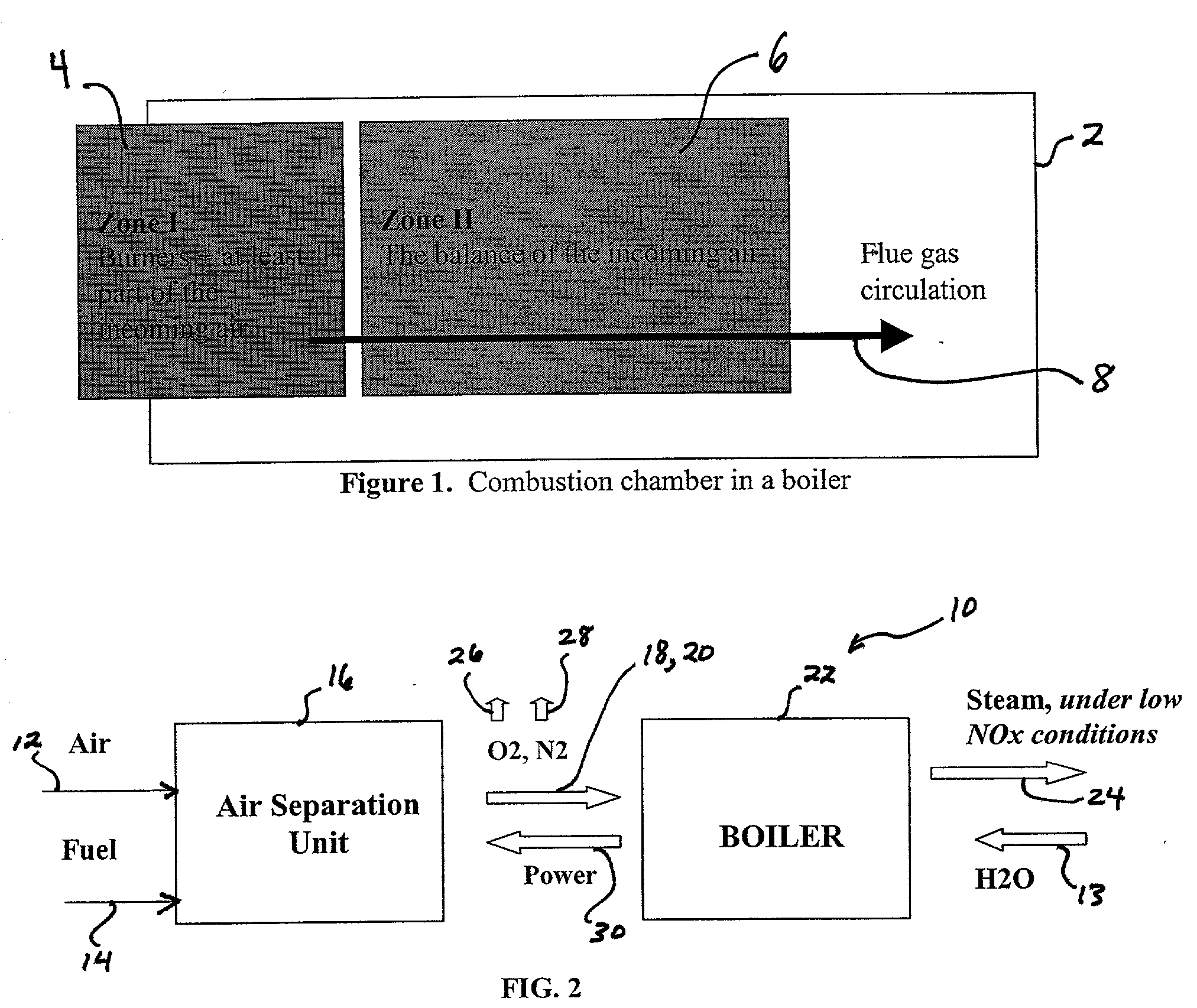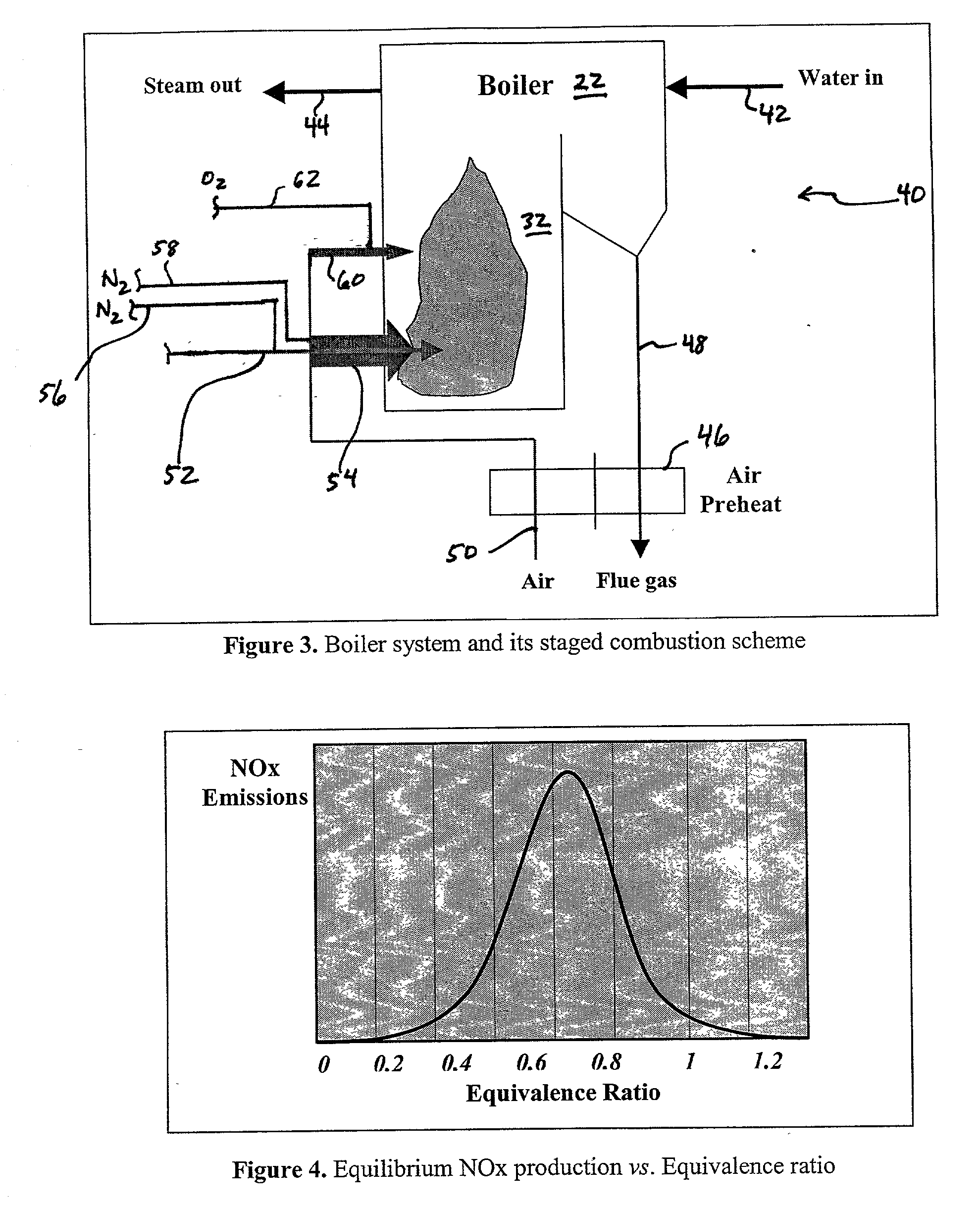Combination air separation and steam-generation processes and plants therefore
a technology of air separation and steam generation, which is applied in the direction of machines/engines, lighting and heating apparatus, combustion types, etc., can solve the problems of large amount of unburned coal in the stack, and large number of industrial processes requiring significant electric power consumption
- Summary
- Abstract
- Description
- Claims
- Application Information
AI Technical Summary
Benefits of technology
Problems solved by technology
Method used
Image
Examples
embodiment 140
[0069] FIG. 9 presents an alternate embodiment 140, using a cryogenic ASU 16'. In this case, the following streams can be retrieved from the ASU: liquid nitrogen (not shown), liquid oxygen (not shown), liquid argon (not shown), gaseous oxygen at 162 and gaseous nitrogen at 148. The gaseous flow of nitrogen 148, representing the main part of the overall resulting mass (given the ratio between nitrogen and oxygen in the air), is first compressed in compressor 144 to form a compressed nitrogen stream 150 at the desired pressure, after exiting cryogenic ASU 16' at atmospheric pressure (unlike in membranes systems). The compressed nitrogen stream 150 is then preheated to form a preheated gaseous nitrogen stream 152, either inside boiler 22 (see FIG. 9) or outside through heat exchange with flue gases. Finally, the compressed / heated nitrogen flow 152 is sent through a gas turbine 154, which is connected preferably both to the above-mentioned compressor 144 and to a generator 142, where ad...
embodiment 170
[0072] FIG. 10 describes another embodiment 170 proposed by this invention. The purpose here is to introduce a high velocity stream of oxygen-enriched gas into the second stage of combustion. A membrane ASU 16 is provided, producing a nitrogen-rich stream 124 at Psep, and an oxygen-enriched air stream 96. At least a portion of oxygen-enriched air stream 96 is preferably combined with a preheated air stream 51 produced via heat exchange in air and nitrogen preheated 46'. A combined oxygen-enriched air stream 171 is subsequently routed to a compressor 172 that forms a compressed oxygen-enriched air stream 174, which is fed at high velocity into boiler 22 at the second stage. The velocity of the stream can be subsonic or supersonic, but preferably supersonic: Vox.ltoreq.2 Vs, where Vs is the sonic velocity of the oxidant stream in the conditions of use. Nitrogen-enriched stream 124 is routed to gas turbine 122 and expanded to produce power for air compressor 86, and a low-pressure nitr...
PUM
 Login to View More
Login to View More Abstract
Description
Claims
Application Information
 Login to View More
Login to View More - R&D
- Intellectual Property
- Life Sciences
- Materials
- Tech Scout
- Unparalleled Data Quality
- Higher Quality Content
- 60% Fewer Hallucinations
Browse by: Latest US Patents, China's latest patents, Technical Efficacy Thesaurus, Application Domain, Technology Topic, Popular Technical Reports.
© 2025 PatSnap. All rights reserved.Legal|Privacy policy|Modern Slavery Act Transparency Statement|Sitemap|About US| Contact US: help@patsnap.com



